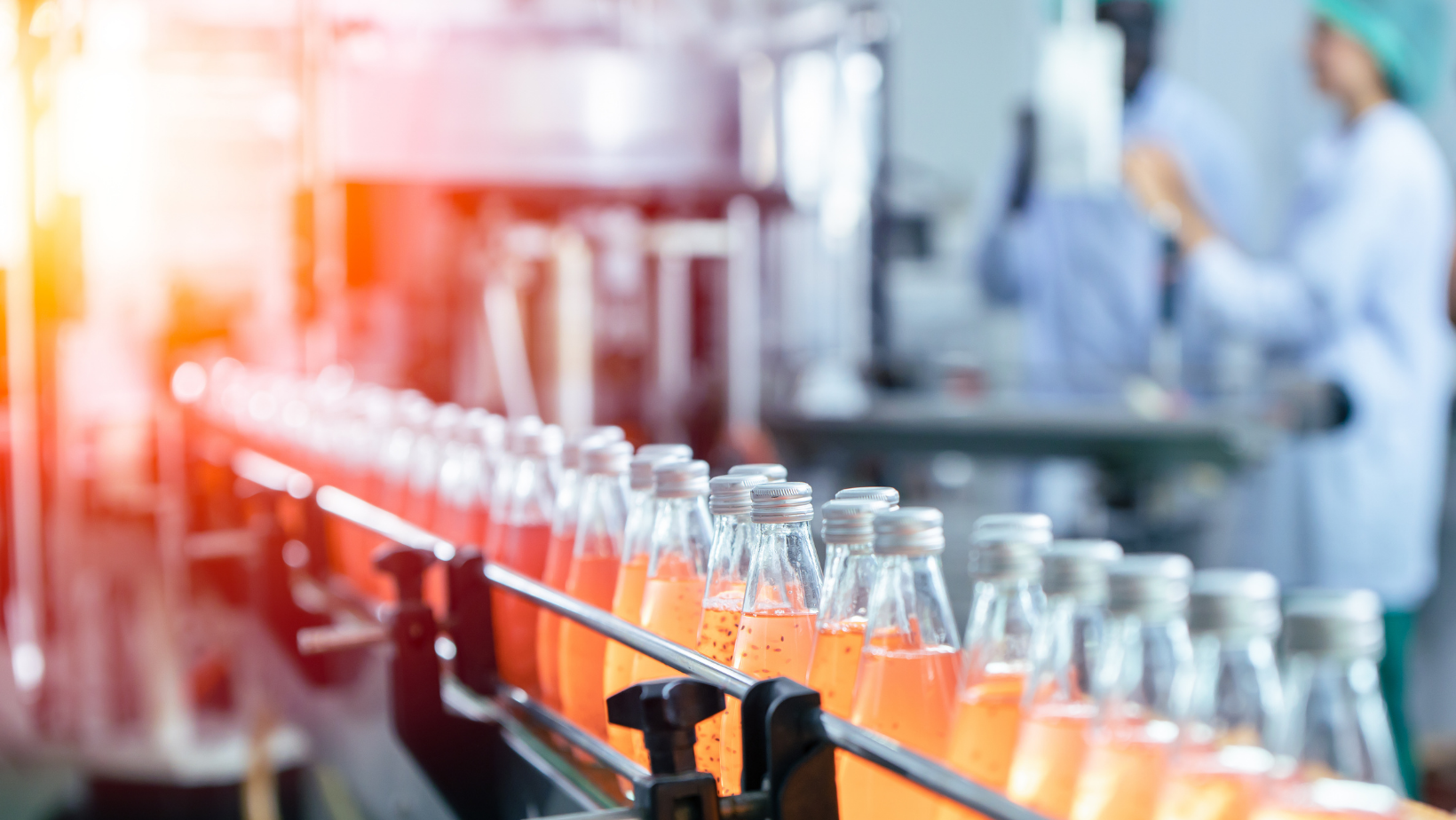AI in Food and Beverage: Personalized Dining Experiences

The food and beverage industry faces unprecedented challenges in 2024. Rising consumer expectations, complex global supply chains, and stringent regulatory requirements create a perfect storm of operational complexity. Forward-thinking companies are turning to artificial intelligence and advanced analytics to transform these challenges into competitive advantages.
At Blue Orange Digital, we’ve helped numerous food and beverage companies implement practical AI solutions that deliver immediate ROI. From predictive analytics on Snowflake to real-time customer insights through Databricks, the opportunities for transformation are substantial—and achievable today.
Critical Challenges Facing Food & Beverage Companies
Before diving into solutions, let’s examine the pressing issues keeping industry leaders awake at night.
Supply Chain Complexity and Visibility
Modern food supply chains span continents, involving countless suppliers, distributors, and retailers. Without real-time visibility and predictive capabilities, companies face:
- Inventory imbalances leading to waste or stockouts
- Inefficient routing causing delivery delays
- Inability to respond quickly to demand fluctuations
- Rising transportation costs eating into margins
Quality Control and Food Safety
A single contamination incident can destroy years of brand building. FDA data shows that foodborne illness outbreaks affect millions annually, making proactive quality management essential.
Traditional manual inspection methods simply can’t scale to meet modern production volumes while maintaining the precision needed for safety compliance.
Evolving Consumer Preferences
Today’s consumers demand personalization at scale. They expect brands to understand their dietary preferences, anticipate their needs, and deliver experiences tailored to their lifestyle. Meeting these expectations requires sophisticated data analytics capabilities that many companies lack.
Practical AI Applications Delivering Results Today
The good news? AI solutions for these challenges aren’t theoretical—they’re delivering measurable results right now. Here’s how leading companies are leveraging AI across their operations:
| Business Function | AI Application | Typical Results |
|---|---|---|
| Demand Forecasting | Machine learning models analyzing historical sales, weather, and market trends | 15-25% reduction in forecast error |
| Quality Inspection | Computer vision systems detecting defects in real-time | 40-60% faster defect identification |
| Customer Service | AI agents handling routine inquiries and order management | 30% reduction in service costs |
| Inventory Optimization | Predictive analytics for automated restocking | 20% reduction in carrying costs |
Success Stories: AI Implementation in Action
Global Beverage Manufacturer Transforms Demand Planning
A major beverage company recently implemented an AI-powered demand forecasting system built on Snowflake’s data cloud. By integrating point-of-sale data, social media sentiment, and weather forecasts, they achieved:
- 92% forecast accuracy (up from 78%)
- 18% reduction in inventory holding costs
- 25% decrease in product waste
Quick-Service Restaurant Chain Enhances Customer Experience
A national restaurant chain deployed AI agents to handle customer inquiries and personalize menu recommendations. The system analyzes order history, dietary preferences, and real-time inventory to suggest items customers are most likely to enjoy. Results included:
- 17% increase in average order value
- 28% improvement in customer satisfaction scores
- 35% reduction in order processing time
Food Processor Revolutionizes Quality Control
A large-scale food processing facility implemented computer vision systems powered by edge AI to inspect products on the production line. The system identifies defects, contamination risks, and packaging issues in milliseconds, resulting in:
- 45% reduction in quality-related recalls
- 60% decrease in manual inspection labor
- $2.3 million annual savings from reduced waste
Building Your AI Strategy: Where to Start
Implementing AI in food and beverage operations doesn’t require a complete digital transformation overnight. The most successful companies start with targeted pilot projects that deliver quick wins while building organizational capabilities.
Step 1: Assess Your Data Foundation
AI thrives on data. Begin by evaluating your current data infrastructure:
- What data are you currently collecting?
- How is it stored and accessed?
- What gaps exist in your data pipeline?
Modern data platforms like Snowflake and Databricks provide the scalability and flexibility needed to support AI initiatives without massive infrastructure investments.
Step 2: Identify High-Impact Use Cases
Focus on areas where AI can deliver immediate, measurable value:
- Demand forecasting if you struggle with inventory management
- Quality control automation if manual inspections are a bottleneck
- Customer personalization if you’re losing market share to more agile competitors
- Supply chain optimization if logistics costs are eating into margins
Step 3: Start Small, Scale Fast
Launch a pilot project in one facility or product line. Measure results rigorously, refine the approach, then scale successful implementations across the organization. This iterative approach minimizes risk while building momentum for broader AI adoption.
The Technology Stack: Tools That Power Food & Beverage AI
Successful AI implementation requires the right combination of tools and platforms. Here’s what leading companies are using:
Data Infrastructure
- Snowflake: Cloud data warehouse for centralized analytics
- Databricks: Unified analytics platform for big data and AI
- Apache Kafka: Real-time data streaming for operational intelligence
AI and Machine Learning
- TensorFlow/PyTorch: Deep learning frameworks for custom models
- Azure Machine Learning: End-to-end ML platform for enterprise deployment
- Amazon SageMaker: Fully managed service for building and deploying models
Specialized Solutions
- Computer Vision: OpenCV, Amazon Rekognition for quality inspection
- Natural Language Processing: GPT models for customer service automation
- IoT Analytics: AWS IoT, Azure IoT Hub for sensor data analysis
Overcoming Implementation Challenges
While the benefits of AI are clear, implementation isn’t without challenges. Here’s how to address common obstacles:
Data Quality and Integration
Poor data quality can derail AI initiatives before they start. Invest in data cleansing and integration early. Establish clear data governance policies and ensure all stakeholders understand the importance of data accuracy.
Change Management
AI adoption requires cultural change. Employees may fear job displacement or struggle with new technologies. Address these concerns through:
- Transparent communication about AI’s role in augmenting, not replacing, human workers
- Comprehensive training programs
- Celebrating early wins to build enthusiasm
ROI Justification
Demonstrating ROI is crucial for securing ongoing investment. Establish clear metrics before implementation and track them rigorously. Focus on both hard metrics (cost savings, efficiency gains) and soft benefits (improved customer satisfaction, reduced risk).
The Future is Already Here
The question isn’t whether AI will transform the food and beverage industry—it’s whether your company will lead or follow that transformation. Companies implementing AI today are seeing immediate benefits:
- Reduced operational costs through automation and optimization
- Enhanced customer loyalty through personalization
- Improved food safety and quality control
- Greater agility in responding to market changes
The McKinsey Global Institute estimates that AI could create up to $400 billion in value for the food and beverage sector over the next decade. Companies that act now will capture the lion’s share of that value.
Taking the Next Step
AI implementation in food and beverage isn’t about replacing human expertise—it’s about amplifying it. By combining domain knowledge with advanced analytics, companies can make better decisions faster, serve customers more effectively, and operate more efficiently.
At Blue Orange Digital, we specialize in helping food and beverage companies navigate their AI journey. Our approach focuses on practical, implementable solutions that deliver measurable results within months, not years. We understand that every company’s needs are unique, which is why we tailor our solutions to your specific challenges and opportunities.
Whether you’re looking to optimize your supply chain with predictive analytics, enhance quality control through computer vision, or create personalized customer experiences with AI agents, the time to act is now. The tools are mature, the ROI is proven, and your competitors are already moving.
Don’t let uncertainty hold you back. Start with a pilot project, prove the value, and scale from there. The future of food and beverage belongs to companies that embrace AI today.


